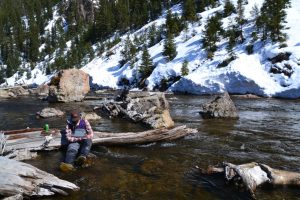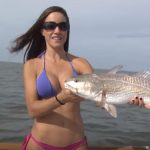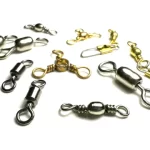Winter fly fishing presents a unique set of challenges, but those who venture out despite the cold can find rewarding experiences on the water. While fishing activity slows during the colder months, trout remain catchable for anglers willing to adapt their techniques. Beyond the thrill of fishing, hitting the river during winter offers several perks.
Slow Down the Presentation
During winter, trout become significantly less active and conserve energy, so it’s important to adjust the presentation accordingly. A slow, deliberate approach is key. Trout feed opportunistically in the colder months, preferring food that drifts directly into their feeding zone. Nymphs become the go-to choice since a dead drift offers the best chance of placing a fly directly in front of a trout. Focus on achieving a realistic drift with minimal effort required from the fish. Aggressive techniques such as quickly retrieving streamers are typically less effective in winter conditions.
Seek Out Deep, Calm Water
In winter, trout gravitate toward deep, slow-moving water where they can conserve energy while waiting for food to pass by. Unlike summer, when faster currents provide ample feeding opportunities, slower pockets are ideal during colder weather. Target areas where slow water meets faster currents, as trout often rest in these zones while capitalizing on nearby food sources.
Size Down Flies and Tackle
With fewer insect hatches in winter, smaller flies become more effective. Midges and stoneflies, particularly small black stoneflies, are reliable patterns to use during colder months. Beyond fly size, lightening up on tippet and indicators can also improve success. Clear, cold water makes trout more wary, so thinner lines and smaller indicators create a less obtrusive presentation. Downsizing overall gear helps match the subtle nature of winter feeding behavior.
Focus on Tailwaters
Tailwaters—sections of rivers located just below dams—provide consistent water temperatures throughout the year, making them productive winter fishing spots. Because they offer stable conditions, tailwaters can simulate near-summer environments even in the heart of winter. Familiarity with these waters during warmer months can provide an edge when fishing them in the cold. However, tailwaters tend to attract more anglers during winter, so they may not offer the same level of solitude as freestone rivers.
Be Ready with Winter Dry Flies
While nymphs dominate the winter fishing scene, dry flies can still play a role on the right day. Midges and Blue-Winged Olives (BWOs) are two insects that continue to hatch during cold months, providing occasional dry fly opportunities. Pay attention to surface activity—sporadic rises often indicate feeding on one of these bugs. Using a double dry fly setup can help improve visibility. Pairing a slightly larger BWO with a smaller trailing midge fly makes detecting strikes easier, especially in low-light conditions.

Fish During the Warmest Part of the Day
Unlike summer, winter fishing doesn’t require an early start. Trout are sluggish in the morning due to low temperatures, making late morning or early afternoon the prime time to hit the water. By waiting for temperatures to rise, both trout and their food sources become more active, increasing the likelihood of strikes. Additionally, starting later in the day helps anglers stay warm and comfortable, enhancing the overall experience.
Choose Warmer Days for Better Action
Picking warm weather days for winter fishing can significantly boost success rates. Warmer conditions encourage trout to feed more actively, providing better opportunities for anglers. If a warm day follows a period of particularly cold weather, trout may be more eager to feed after a period of lower activity. When possible, plan trips to coincide with these milder weather windows for the best results.
Try a Dead Drift with Streamers
Streamer fishing isn’t typically associated with winter, but it can still be effective with some adjustments. Rather than retrieving streamers aggressively, dead drifting them under an indicator mimics the nymphing technique more commonly used in winter. This method presents the streamer as an easy, substantial meal for lethargic trout. While smaller flies generally outperform streamers during winter, the occasional opportunistic trout may take advantage of a larger offering without expending much effort.
Winter trout fishing can be challenging, but applying these strategies helps ensure a more enjoyable and successful outing. With fewer crowds, beautiful snowy landscapes, and the chance to refine technical skills, winter fishing can be well worth braving the elements. Staying warm, patient, and adaptable makes all the difference when casting into icy waters.
Image/Source: fishuntamed





